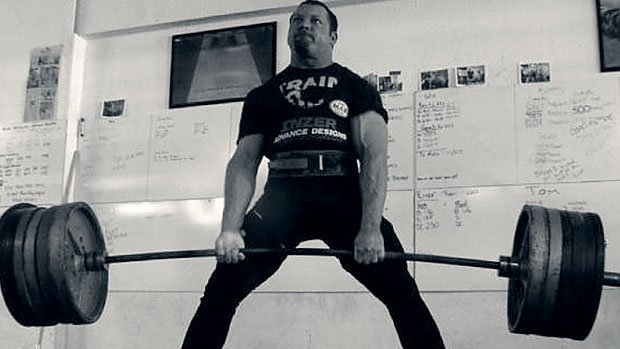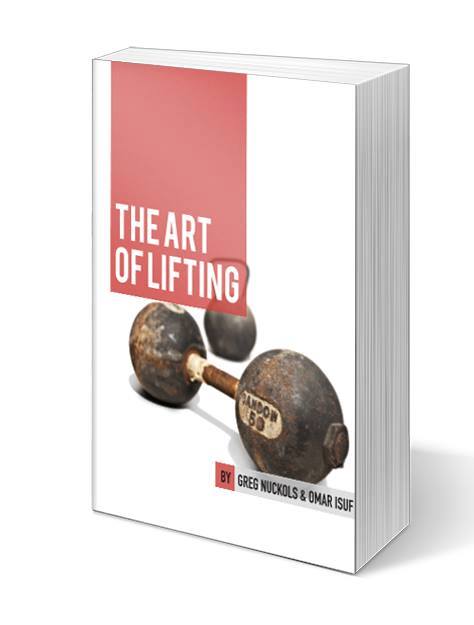Below is an excellent guest article from Greg Nuckols. I just finished reading the new eBook that Greg wrote with Omar Isuf (HERE is a link to the eBooks – there are two of them; The Art of Lifting and The Science of Lifting), and though I liked both books, I actually liked The Art of Lifting most. I can’t tell you how impressed I am with Greg and Omar’s insight. I’ve been a big fan of Greg and Omar for a while, so it’s great to see them come out with a great product together.
5 Things People Need to Stop Overthinking
By Greg Nuckols
There are three laws I’ve found to be true in a remarkable number of cases:
- Parkinson’s law: “Work expands so as to fill the time available for its completion.” If you have a 2 hour project and 8 free hours to work on it, it will generally take you all 8 hours to finish it. Conversely, if you slack until you only have an hour left, you’ll usually end up getting it done, and doing a pretty decent job at it.
- Poe’s law: “Without a blatant display of humor, it is impossible to create a parody of extremism or fundamentalism that someone won’t mistake for the real thing.” If you’ve ever been sucked into a really long Facebook argument about almost anything (be it training, nutrition, politics, religion, etc.), then you probably understand who this law is referring to.
- Sayre’s law: “In any dispute the intensity of feeling is inversely proportional to the value of the issues at stake.” This is the law that this article addresses. Little nitpicky things that really don’t influence your results in any meaningful way are almost guaranteed to be the subjects of heated discussions where friendships are ruined, e-dicks are measured, and no one comes out of the discussion any better off for having had it.

-
Bar position for squats
Let me describe an exercise for you. You place a loaded barbell across your shoulders, squat down to a position with high degrees of both knee and hip flexion, either as deep as you can go, or as deep as you can safely go before your back starts rounding, then stand up.
Did I just describe the high bar or low bar squat? If you guess “both,” you’re absolutely right. Moving the bar 2-3 inches up or down your back doesn’t make enough difference for 99% of people to worry about. Try them both out, and do whichever is the most comfortable for you.
If you’re a powerlifter, then obviously the main criteria to use is: “Which allows me to move the most weight?” That’s the whole point of the sport, after all. If you’re a weightlifter, then high bar is probably prudent since it most closely mimics the position in which you’d receive a clean or snatch.
If you don’t compete in either of those sports, then just squat; bar position really doesn’t matter.
-
Beltless training
This is another topic that, while not entirely unimportant, is not worth arguing about until you’re blue in the face.
It’s pretty clear that training with a belt allows you to lift heavier loads, doesn’t really affect activation of your abdominal muscles, and may even lead to increased activation of your prime movers due to increased spinal stabilization and the aforementioned heavier loads. It also increases intra-abdominal pressure, which can cause an even larger spike in blood pressure when training, meaning it could be problematic for people who have conditions exacerbated by blood pressure fluctuations.
So if you want to lift as much weight as possible right now, wear a belt. If you have issues that are made worse by blood pressure spikes, then don’t wear a belt.
For training purposes, I’m not aware of any data showing that training with or without a belt really affects strength gains. Plenty of people have gotten strong lifting primarily with a belt, and plenty of people have gotten strong lifting primarily beltless. Just do the one you prefer.

-
Stance width, footwear, grip width, or deadlift style
If I had a nickel for every time I saw a “guide” to choosing footwear or stance width of squat, grip width for bench press, or deadlifting style (sumo or conventional) based off some arbitrary anthropometric measurements, I’d probably have about $1.00. Meaning there are at least 20 too many in existence (I wrote one of them. Sorry).
When did people forget that they could just experiment? Trying different options isn’t feasible for things that have a high opportunity cost (i.e. buying a house. You can’t narrow it down to two, buy them both, live in both for a while, and then decide which one you like best), but none of the aforementioned decisions have a high opportunity cost. The costliest would be buying an extra set of shoes for squats to see if you prefer squatting with a raised heel or without one (which will be ~$60-70 unless you want to buy top of the line weightlifting shoes).
Want to know what squat stance is best for you? Go to the gym, load up about 70% of your max, and try out a few different stance widths and a few different toe positions. Go with the one that feels the strongest and most comfortable. Ditto for bench press grip width. Ditto for sumo and conventional deadlifts.
The most important research in this area? The N=1 case study you do on yourself that will take maybe 15 minutes.
-
“What’s the best exercise for…?”
There are a few circumstances where there is a clear-cut best exercise to accomplish a specific purpose. One is when you’re having difficulty learning a complex movement; a slower or regressed version of that movement, or the piece of the movement you’re having the most difficulty with (depending on the situation) is probably the best thing you can do. Or, if you’re trying to master an exercise for its own sake (i.e. if you’re a powerlifter and you want to improve your squat), that precise exercise is probably the best exercise you could do to accomplish that purpose.
Beyond that, it’s wide open. There are no magic exercises. If there’s a general movement pattern you’re trying to improve (not a specific exercise. i.e. pushing strength instead of strictly the bench press), then basically any exercise with similar demands through a fairly long range of motion will do the trick. If there’s a specific muscle you’d like to grow and strengthen, then just about any exercise for which that muscle is likely to be the primary limiting factor will work just fine.
Instead of searching for (or worse, wasting time debating online) some magical exercise, use some critical thinking skills and find movements that look similar to the skill you want to improve, or that overload the muscle you’re trying to grow or strengthen, and do them consistently over time, applying progressive overload. It works like a charm every time.
-
Size vs. strength
Gaining size (muscle mass) versus gaining strength is really a false dichotomy for most people; they’re two sides to the same coin.
Now, if you’re brand new to lifting, you’ll probably gain strength (weight on the bar) much faster than you gain muscle mass initially. That’s a simple matter of your nervous system learning the movement and figuring out how to effectively use the muscle you currently have (plus a little extra you build) to move the load.
Once you’ve learned a movement, though, there’s only one way to keep those strength numbers ticking up: Those muscle have to grow.
On the other hand, if you’re training primarily to gain mass, those muscle gains will be slow in coming unless you apply progressive overload (increasing training volume, intensity, or both). And, by doing so, you’ll get stronger. Then, with that increased strength, you can load the muscles even heavier, create more tension, and grow bigger yet.
To get stronger (unless you’re a complete beginner), you need to get bigger, and to get bigger you need get stronger. Training for one without the other doesn’t really make sense for most people.
In some fringe cases it may be possible and necessary. For instance, if you’re an elite powerlifter weighing very close to the top of your weight class, then you may need to train in a manner to eek the last possible neural improvements out of the movements without gaining muscle mass that would push you into the next weight class (of course, if you can grow into the next biggest weight class, it would probably be good to do so because you’d be carrying more muscle per unit of height, and probably be more competitive, but that’s another discussion). If you’re a bodybuilder with a long injury history and not much more room for growth in the first place, then avoiding the heavier training that drives strength gains in favor of lighter, more voluminous training may be prudent.
For everyone else, get stronger to get bigger and get bigger to get stronger.
Click HERE to check out Greg’s new eBook
About the Author
 Greg Nuckols is the owner and founder of Strengtheory.com, a website dedicated to combining lifting advice with biomechanics and scientific theory. More than 250,000 people visit and learn from Strengtheory articles each month. Greg is also the chief content director at Juggernaut Training Systems, one of the biggest strength websites in the world. As the owner of one large fitness website and the content director of one even larger, Greg is very tapped into what questions people have and what information is often misconstrued. Practicing what he preaches, Greg has held 3 all-time world records in powerlifting. His current numbers are a 755lb. squat, 475lb. bench, and 725lb. deadlift.
Greg Nuckols is the owner and founder of Strengtheory.com, a website dedicated to combining lifting advice with biomechanics and scientific theory. More than 250,000 people visit and learn from Strengtheory articles each month. Greg is also the chief content director at Juggernaut Training Systems, one of the biggest strength websites in the world. As the owner of one large fitness website and the content director of one even larger, Greg is very tapped into what questions people have and what information is often misconstrued. Practicing what he preaches, Greg has held 3 all-time world records in powerlifting. His current numbers are a 755lb. squat, 475lb. bench, and 725lb. deadlift.







You’re absolutely right about the size and strength piece. We hear this a lot and it gets old after a while. As a natural athlete, they come hand in hand. Good stuff.